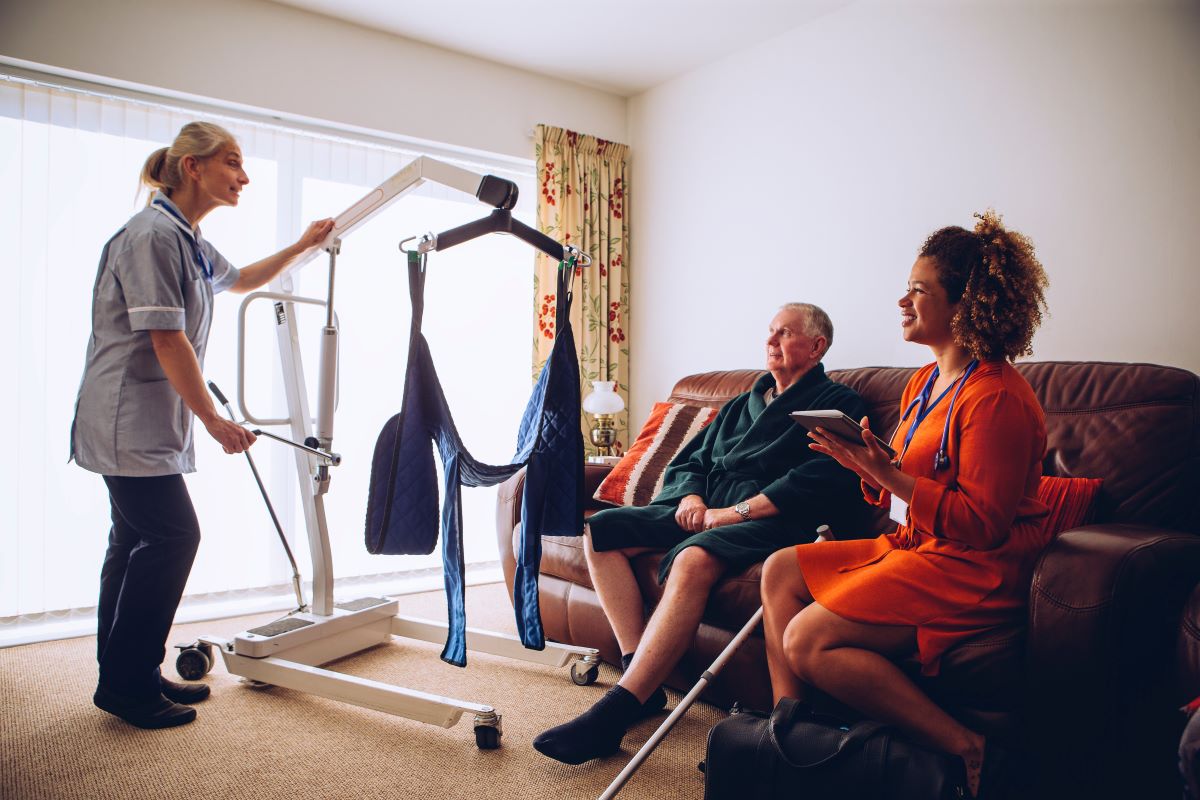Durable Medical Equipment Billing Guide

Durable Medical Equipment (DME) such as canes and walkers help people with a disabling medical condition, illness, or injury achieve independence and safely live at home. Considerable responsibility is placed on medical staff and DME suppliers to follow Medicare’s rules and policies so patients receive their needed equipment on time. This is where a durable medical equipment billing guide comes in handy.
Becoming an expert in the complex Medicare DME process takes significant time and effort. Here, you can quickly learn the basics including the definition of DME, who qualifies for coverage, how to order it, which DME is covered, and finally, how to bill for it. The Medicare’s DME site serves as the source for the information provided, unless noted otherwise.
What Is the Definition of DME?
Medicare defines DME as equipment that precisely meets all the following criteria:
- Long-lasting, withstanding repeated use
- Used for a medical reason
- Used due to illness or injury
- Used in the patient or resident’s home
- Expected to last at least 3 years
You may have heard about “durable medical equipment, prosthetics, orthotics, and supplies (DMEPOS).” It’s a broader term that includes DME and extends coverage to supplies, prostheses, splints, intraocular lenses, etc. However, this durable medical equipment billing guide will only be addressing DME.
Who Qualifies for DME Coverage?
Patients living at home, in non-skilled nursing homes, or long-term care with medical necessity for an approved DME qualify for coverage if they have Original Medicare (Part A and Part B). Once the Medicare Part B deductible is met for the year, they’re responsible for 20% of the cost, and Medicare covers the remaining 80%.
While patients and residents must use a Medicare-enrolled practitioner and DME supplier to receive coverage, they only receive the full benefit of their 80% if both always take assignments, which is Medicare’s approved amount for a service or item. Otherwise, the costs will be higher.
Medicare Advantage Plan follows Original Medicare rules and offers the same services to their members, including DME. However, your office will need to confirm specific rules and coverage with the plan as it isn’t covered in the durable medical equipment billing guide.
How Is DME Ordered?
A Medicare-enrolled physician or treating practitioner orders durable medical equipment. The federal government has standardized the components of DME orders and prescriptions. These components include:
- Beneficiary name or Medicare Beneficiary Identifier (MBI) number
- Description of the item
- Quantity, if applicable
- Treating practitioner name or National Provider Identifier (NPI)
- Date of the order
- Treating practitioner signature
The physician or treating practitioner submits the complete written order to the Medicare-enrolled supplier before submitting a claim for Medicare payment. Medicare will determine if their coverage will include renting or buying the equipment.
Prior to ordering or completing a DME order, the providers and supplier should also review Medicare’s master list to verify compliance. Sometimes Medicare requires prior authorization, a face-to-face visit, and a written order before delivery (WOPD).
Is There a Durable Medical Equipment List?
Not sure if the equipment you want to recommend is an affordable option that Medicare will cover? This durable medical equipment billing guide section addresses your concern by breaking down what is and isn’t covered.
What DME Is Covered by Medicare?
Searching through long lists of Medicare-approved equipment to select the correct one is labor-intensive. Fortunately, we’ve categorized the DME into three tables and included a corresponding range of Healthcare Common Procedure Coding System (HCPCS) II codes provided by the American Academy of Professional Coders (AAPC). The government recognizes CPT codes for billing medical services and procedures, but uses HCPCS II for DME supplies and equipment.
The DME categories include ambulation and mobility; bed, baths, toileting, and safety; and body systems. This durable medical equipment billing guide allows you to quickly find the range of HCPCS codes your DME belongs to and obtain the specific code using the AAPC link above.
|
Table 1: Ambulation and Mobility DME |
||
|---|---|---|
| Walking Aids and Attachments
Canes, Crutches, & Walkers E0100-E0159 |
Extension/Flexion Rehabilitation
Devices E1800-E1841 |
Transport Chairs
E1037-E1039 |
| Traction and Other Orthopedic Devices
E0830-E0948 |
Patient Lifts and Support Systems
E0621-E0642 |
Standard Wheelchairs
E1050-E1228 |
| Special, Lightweight, and
Heavy Duty Wheelchairs E1240-E1298 |
Wheelchair Accessories
E0950-E1036 |
Manual Wheelchair Accessories
E2201-E2295 |
| Power Wheelchair Accessories
E2300-E2398 |
Wheelchair Seat, Back, Arm Cushions
and Support E2601-E2633 |
Pediatric Wheelchairs
E1229-E1239 |
| Pediatric Gait Trainers
E8000-E8002 |
||
|
Table 2: Bed, Baths, Toileting, and Safety DME |
||
|---|---|---|
| Sitz Baths
E0160-E0162 |
Bathing Supplies
E0240-E0249 |
Whirlpool Baths
E1300-E1310 |
| Hospital Beds and
Associated Supplies E0250-E0373 |
Pressure Mattresses, Pads,
and Other Supplies E0181-E0199 |
Commode Chair and
Supplies E0163-E0175 |
| Safety Devices
E0700-E0711 |
||
|
Table 3: DME by Body System |
|||
| Circulation
Pneumatic Compressors and Appliances E0650-E0677 |
Head and Neck
Jaw Motion Rehabilitation Systems E1700-E1702 |
Endocrine
Insulin Infusion Pumps and Supplies E0776-E0791 |
|
| Female Reproductive
Breast Pumps E0602-E0604 |
Integumentary
Ultraviolet light therapy system E0691-E0694 |
Integumentary
Wound Therapy Pumps E2402-E2402 |
|
| Mental Health
Virtual Reality Cognitive Behavioral Therapy Device (CBT) E1905-E1905 |
Neuromuscular
Stimulation Devices E0720-E0770 |
Renal
Dialysis Systems and Accessories E1500-E1699 |
|
| Respiratory
Oxygen Delivery Systems and Related Supplies E0424-E0487 |
Respiratory
Humidifiers and Nebulizers with Related Equipment E0550-E0601 |
Respiratory
Other Breathing Aids E0605-E0606 (Postural Drainage Boards & Vaporizers) |
|
| Respiratory
Accessories for Oxygen Delivery Devices E1352-E1406 |
Speech
Communication Boards E1902 |
Speech
Speech Generating Devices, Software, and Accessories E2500-E2599 |
|
| Multiple
Apnea, cardiac, and glucose monitors and devices E0607-E0620 |
Multiple
Gastric, glucose, and pulse pumps E2000-E2120 |
Multiple
Heat, Cold, and Light Therapies E0181-E0199 |
|
Tip: Medicare allows physicians, nurse practitioners, physician assistants, or clinical nurse specialists to bill for required face-to-face DME encounters through HCPCS code G0454.
What DME Is Not Covered by Medicare?
Medicare does not cover DME that it doesn’t deem medically necessary and will deny the claim if the equipment isn’t medical or is inappropriate for home use. Here are some examples of DME items not covered by Medicare:
- Convenience —; raised toilet seats, spare tanks of oxygen, etc.
- Educational —; braille teaching texts
- Not reasonable for home use— oscillating bed
- Non-reusable supply, not rental-type items — catheters, irrigation kits, disposable bed sheets, etc.
- Not medically necessary — white cane for blind people (not required for mobility), grab bars, telephone alert systems, etc.
How to Bill for DME
This section of the durable medical equipment billing guide reviews how to properly order and document for DME. Whether you’re a Medicare supplier, practitioner, or healthcare administrator doing your part to ensure a smooth process, the claim is ready for submission once the DME is delivered.
To submit a Medicare DME claim:
- Step 1: Verify that all patient information and their insurance details are correct.
- Step 2: Complete the CMS-1500 form on the Common Electronic Data Interchange (CEDI) Claims Portal. Medicare contracts CEDI for electronic claims submission.
- Step 3: Ensure that all the information on the form is correct. Double check that all codes correspond with the correct DME items.
- Step 4: Submit the claim. If the claim is approved, Medicare B will pay 80%, and the patient will pay 20% of the claim.
- Step 5: If the claim is not approved, resubmit it after following their directions.
Looking to Streamline Your Healthcare Processes?
This durable medical equipment billing guide should help you prepare for ordering and billing DME. Are you curious about other ways to simplify your facility’s operations? IntelyCare’s newsletter covers important trends and expert insights to help ease your concerns while maintaining efficiency and improving patient care.
IntelyCare writer Katherine Zheng, PhD, BSN, contributed to the writing and research for this article.

